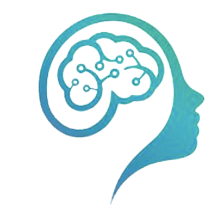Attention Therapy (VCAT)
Visual Concentration Attention Technology (VCAT) is consisted of visual concentration and attention techniques, a form of neuropathway/cognitive therapy. VCAT program is based on the concept of selective and divided attention theories including non-invasive action potential like attentional stimulation to the brain from its build in visual field template that influences the firing rate of neurons, discharge of neurotransmitters, brain waves, and increasing the oxygenated blood flow throughout the brain for an optimal plasticity.
VCAT is assumed to ease neural illness, stop problem behavior, increase productivity and creativity, induce sleep, optimize attention, concentration, learning and memory, aid in relaxation and stress release, and creates a therapeutic environment for any neural network related disorders.
Talk therapy is overrated, medications deal with major site effects, and so VCAT maybe the only safe way to get satisfaction and results in improving brain’s neural disarrays and dysfunction.
According to the quantitative pre and post treatment research study conducted by Dr. Nader Siahdohoni on attention, concentration, and memory in individuals with ADHD as well as hundreds pilot studies, empirical and evidence-based-studies, programs such as VCAT could be an effective way in promoting efficient communication among the many nerve cells (neurons) and functional centers located throughout the brain and sensory motor system leading to improvement of attention, concentration, perception, cognition, and memory which are the main components of disorders such as ADHD, learning disability, depression, and anxiety in children and adolescents.
Brain Mapping and VCAT
In many studies and research the brain has been called the most complex object in the known universe, and in many ways it's the final frontier of science. The human brain contains some 100 billion neurons, which together form a network of Internet-like complexity.
At the root of all our thoughts, emotions and behaviors is the harmonized, balanced, and synchronized electrical pulses produced from such masses of neurons communicating with each other through chemicals we know as neurotransmitters. When these chemicals and electrical pulses (Brainwaves) within our brain functioning system are out of balance, there will be corresponding problems in our emotional and or our neuro-physical health. Thus, brain mapping attempts to provide a complete image of the brain's structure and its neural activities by mapping the neurons as they transfer information among each other.
Brain mapping helps us to understand the relationship between structure and function of the brain in order to be able to treat psychological and psychiatric disorders. Brain mapping with its topographic display is a method of analyzing the electrical activity of the brain to derive quantitative patterns that may correspond to diagnostic information and/or cognitive deficits. The analysis of brain electrophysiological data has been proposed for use in the diagnosis of various psychiatric and psychological disorders.
Clinical studies have demonstrated distinctive forms of brain electrical activity in psychiatric conditions including, attention deficit hyper activity disorders (ADHD), learning disability, schizophrenia, depression, anxiety, post-concussion syndrome, mild-to-moderate head injury such as sports-related concussion, alcoholism and drug abuse including many other mental and behavioral challenges in children and adolescents.
Often times these disorders stop responding to medications and other traditional therapies which then a more in dept treatment methodology is required to treat such disorders. Here is where VCAT takes over providing an effective neuropathway treatment plan to balance and enhance brains’ functioning system.
We at VCAT TRC use the most advanced equipment and technology in brain mapping and brain monitoring along with our most unique and powerful neuropathway treatment methodology “Visual Concentration Attention Therapy (VCAT),”developed by Dr. Nader Siahdohoni. Our brain mapping technology allows real time brain monitoring (Watch and monitor how VCAT changes your brain performance in a real actual time).
